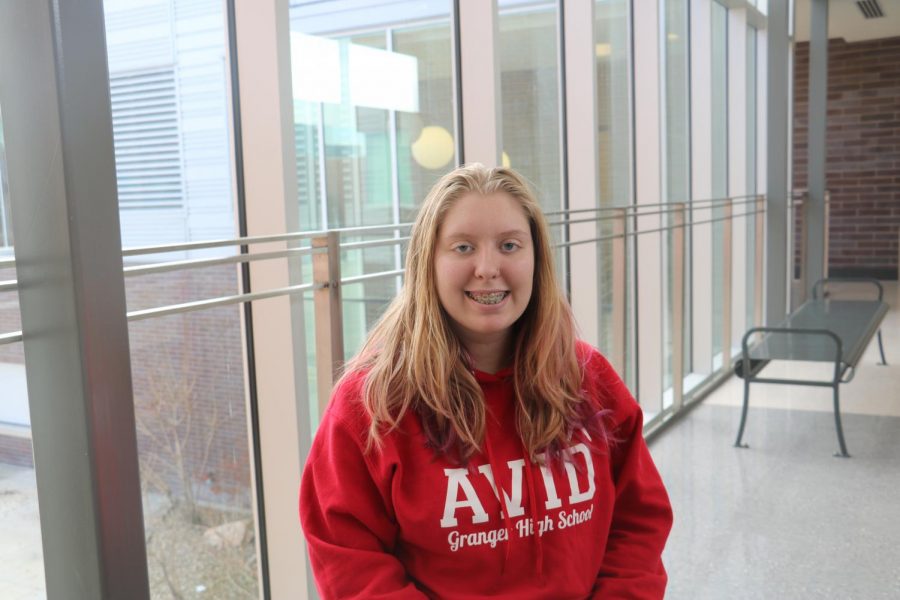Happiness should be taught to every student every year
Abigail Martin thinks that a happiness class would be beneficial, as long as it were made a priority.
April 15, 2019
LAST YEAR at Yale, roughly 1,182 undergraduates enrolled in a class called “Psychology and the Good Life.” It caught the attention of David Schimer, a re- porter for The New York Times because the largest lectures offered at Yale don’t exceed 600 students. Dr. Laurie Santos, a psychology professor and head of one of Yale’s residential colleges, taught the class in which students learned how to live a happier life.
“Dr. Santos speculated that Yale students are interested in the class because in high school they had to deprioritize their happiness to gain admission to the school,” as reported on the nytimes.com website. High schools are not making happiness a priority. This lack of focus on happiness has consequences.
“In reality, a lot of us are
anxious, stressed, unhappy, and numb,” Alannah Maynez, a fresh- man that took the course, told Mr. Schimer. With students not being taught how to be happy, they be- gin to numb their emotions. Essentially, they are taught to focus on success rather than emotions.
“The fact that a class like this has such large interest speaks to how tired students are of numbing their emotions — both positive and negative — so they can focus on their work, the next step, the next accomplishment,” Maynez said. When students ignore their happiness, they have more time to focus on their work or next step, just like Maynez said. Focusing too much on their work, school, etc., causes it to be one of few things that makes them happy or successful.
“No matter what they did, it wasn’t good enough,” Julie Hunter, an assistant teacher at Bradon Forest School, said. She noticed that her students didn’t have self- esteem or self-confidence. So, she introduced a happiness program to the class. Within a year, the students became much calmer, more positive, and were able to identify their feelings.
If just one year of a happiness program changed a class’s mind- set, imagine what it could do if it was added to a whole curriculum. The lives of many students would be changed. “When we look at a situation, we tend to think of the negatives before the positives. We need to be looking for the good in people and our situations. If the mindset is changed, then the culture will change,” Ms. Gaskins said.
According to Ms. Gaskins, mindset is the key. Once the mindset changes from negative to
positive, people begin to feel hap- pier. A class dedicated to teaching happiness would be very beneficial. When students are taught how to change their mindset, it will affect the culture around them. “When we can understand ourselves better, we can become a happier person,” Gaskins said.
Mindset is important, especially when struggling with anxiety and depression. Having a class similar to “Psychology and the Good Life” would help students to learn more about them- selves and how to be a happier person. “I’ve struggled with a lot of things. Taking psychology has taught me a lot and has helped me be happier. I feel like we should have a class that teaches happiness because it would be beneficial,” Abigail Martin (12) said.
Sadly, Dr. Santos is no longer teaching “Psychology and the Good Life.” “Large courses can be amazing every once in a while, but it wouldn’t be fair to other courses and departments to take all of their students away. It causes conflict, and we can’t afford to offer this every year in terms of teaching fellows and resources,” Dr. Ahn, head of the psychology department at Yale, told the New York Times.
When a large number of students signs up for a course that teaches them how to be happy, that means students are feeling overwhelmed and don’t know how to deal with their emotions. Having this course every year therefore might be beneficial to the students, but it might not be fair to the other classes.
If the students had been taught earlier on, then the problems associated with having this class wouldn’t be such a problem. By including the class in the secondary educational system, students would learn how to be happy and balance their emotions from a younger age.
Today, students are taught that success leads to happiness. There is no happiness included in the education system. Happiness is not a class that students can take. It is not incorporated into the lessons they are taught. It is not a club they can join. Happiness is an emotion that everyone should get to experience.




